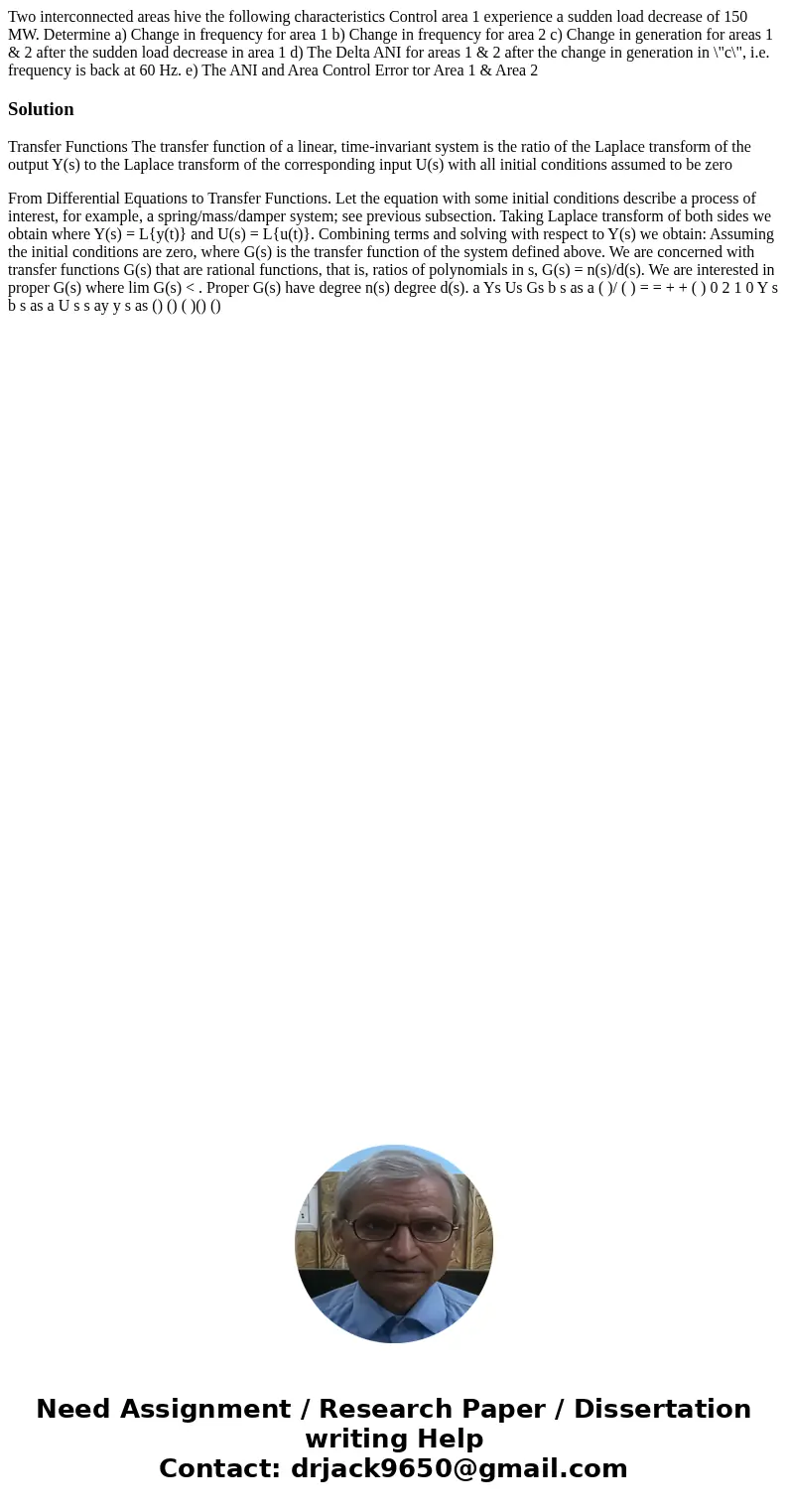Two interconnected areas hive the following characteristics
Solution
Transfer Functions The transfer function of a linear, time-invariant system is the ratio of the Laplace transform of the output Y(s) to the Laplace transform of the corresponding input U(s) with all initial conditions assumed to be zero
From Differential Equations to Transfer Functions. Let the equation with some initial conditions describe a process of interest, for example, a spring/mass/damper system; see previous subsection. Taking Laplace transform of both sides we obtain where Y(s) = L{y(t)} and U(s) = L{u(t)}. Combining terms and solving with respect to Y(s) we obtain: Assuming the initial conditions are zero, where G(s) is the transfer function of the system defined above. We are concerned with transfer functions G(s) that are rational functions, that is, ratios of polynomials in s, G(s) = n(s)/d(s). We are interested in proper G(s) where lim G(s) < . Proper G(s) have degree n(s) degree d(s). a Ys Us Gs b s as a ( )/ ( ) = = + + ( ) 0 2 1 0 Y s b s as a U s s ay y s as () () ( )() ()

 Homework Sourse
Homework Sourse